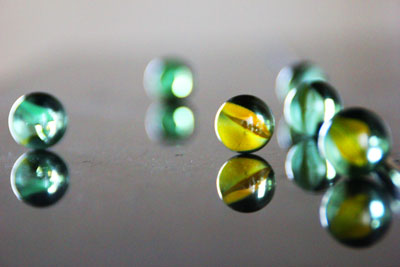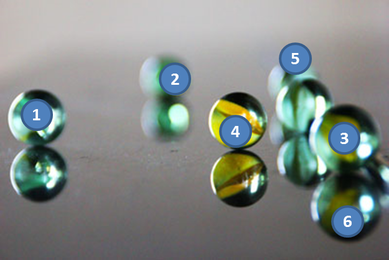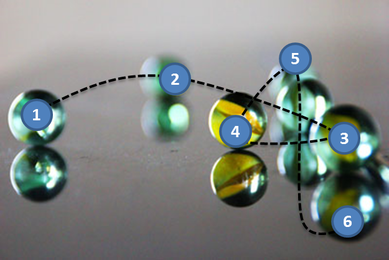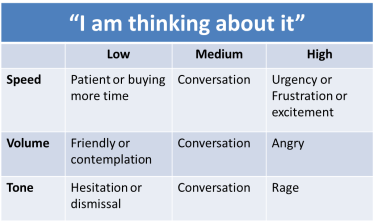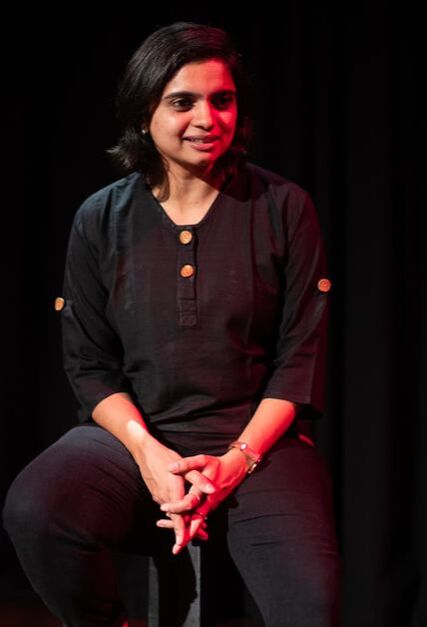In 2012, I was preparing for my first solo, an intimate theatre performance, where I was to share personal moments from my life with the audience sitting around me. I had my lines, my costume and I had rehearsed my act quite a few times. I was confident that I would have a great show. A few days before the show, I invited my mentor into the rehearsal studio to take a look at my performance and give me some feedback. Five minutes into the performance, she stopped me and said that my look was quite intimidating. She asked me soften my gaze and continue my performance. Little did I know that I was intimidating her with my eye contact When we are busy thinking about what to say, to deliver the facts right, we are unaware about the signals we are sending people, through our body, voice and eyes. Our eyes communicate way more than we think they do. People can gauge the mood that we are in and also be able to predict our emotional state by looking into our eyes. Here's how theatre based training can help us make effective connections and communicate powerfully - through Eyetact. Activity: Eyetact- focus and movement Through this activity, we are going to understand focusing techniques and the way our eyes move to address audiences. Step 1: Take a look at the image below. Pick one marble and focus your gaze at that alone for about 10 seconds You will notice that your eyes are quite strained after the 10 second sustained focus. This is because, when we look at one particular point, our focus tends to narrow and our eyes widen. This is typically called hard focus and can be intimidating when you are in a one-on-one situation. The outcome: People in front you can interpret that you are probably angry or irritated. If we kept our gaze in one fixed spot, while addressing a group of people, the others could feel cut off from the conversation. Step 2: Now sit back and look at the entire image for 10 seconds without paying attention to any one thing in particular. You are probably more relaxed and you surely notice more in the image than you did the first time. When we relax our gaze, we let things come into our sphere of vision and don't go in search of something particular. This way, we are able to get a better visual insight from what you are looking at. The outcome: You come across as a relaxed, calm and confident individual. This kind of focus is called soft focus, a friendly, conversational approach to making eye contact. Soft focus is a great way to address a group of people, to inform or inspire. Now that we understand hard focus and soft focus, let's look at how we can move our eyes in a fluid way to make effective connections with our audience. Step 3: Relax the eyes and bring them to a state of soft focus. Take a look at the image below and move your gaze from marble number 1 to marble number 6. Pay attention to the way the eyes are moving. When we are addressing multiple people, our eye contact can tend to be a bit jerky, shifting from one person to another. A simple way to make a smooth transition is to imagine a fluid thread connecting the people in the space. This will make the eye movement and transition smooth and powerful. Step 4: Now repeat the movement from number 1 to 6. You will notice the difference. *Note that it is also important to move your head along with your eyes. Keeping your head stationery and moving only your gaze will look disconnected.
Outcome of theatre based Eyetact training
1 Comment
Did you know that way we speak has 5 times higher impact on communication effectiveness than the words we speak? Did you know that our voice quality can influence our credibility? "A few years ago, I was making a presentation to my CEO on the design of the company's Intranet portal. I was quite excited about my presentation and was raring to go. So when it was my turn, I started by greeting everyone present with a high energy 'Good Morning' and introduced the objective of my presentation. Even before I moved to slide 1, the CEO remarked, 'You are too loud. Can you soften your speech please?' Though my presentation went well and I received a go ahead on the project, this comment was playing in my mind throughout the meeting and afterwards." When we are unaware of our voice patterns, we can end up being too loud in a conference room or too fast in a team meeting and lose the audience's attention at important moments. We need to carefully understand the intent of our speech, our physical environment and project a suitable voice quality. Each of us have a unique voice and our voice scales are different. We need to understand which scale works for us in different scenarios and adapt our voices accordingly to communicate the desired message. Activity: VQ Scale (Here's a Voice Quotient scale for you. 1 is the lowest and 10 the highest. 5 is a comfortable middle) Now here's a line for you: "I am thinking about it" Step 1: Read the line aloud at a comfortable volume. Step 2: Use the Pace Scale provided below and say the same line at a high speed and then at a low speed Step 3: Now say the same line in a high volume and then in a low volume using the Volume scale Step 4: Now say the same line in a high tone and then in a low tone. Did you notice how the various high & low combinations influenced the emotion and the mood that came through ? Our speech speed, tone and volume certainly contribute to the way we are perceived. The physical space and the context also influence the communication intent and message.
Outcome of Voice Quotient Training through theatre
"Here's the project vision and these are the desired outcomes"
This is a line you will hear quite often in meeting rooms and conferences. When projects are outlined, team members have to possess the ability to visualise outcomes. From envisioning product designs and packaging to new concept developments to consumer understanding, one has to be able to combine skills of imagination with knowledge and creativity. How does one train to visualise better? Are there ways to develop imagination skills? Theatre based training can enable visualisation and help participants understand the power of detailing, visual population and creative thought. Activity: Imagineer (Read the description below. Once you've finished, take 30 seconds and then scroll down to look at the questions) "He is wearing a striped blue tie. The tie has the letters KC embroidered on it. There is a metallic pen in his shirt pocket. You can smell musk. You hear the words, "Are we ready for this?" There is a moment of silence. He pulls out his pen, opens it and signs a document. There is applause and he smiles jubilantly." (Take 30 seconds now and imagine the scene) Now that you have a visual frame of this event, try and answer these questions. 1. What was the man's name? 2. What was the colour of his shirt? 3. What kind of hair did he have? 4. How tall was he? 5. Did he have a beard? 6. Were there paintings in the room that he was in? 7. What was the shape of the table? 8. What time of the day/night was it? 9. What brand of perfume was he wearing? 10. Was coffee/tea served at the table? How many questions did you have the answers to? We often default to the stated observations; limiting ourselves by what is available and provided, hence not seeing the bigger picture. By going beyond the obvious, by including what lies in the periphery – by imagining better, we are able to create a richer picture and a more compelling vision. When the mind trains to process information as visuals, it enables individuals and teams to develop the skills to look at fine details as they are composing the image in their mind's eye. Process: By playing characters or by portraying a variety of situations through their bodies and voice, one develops the ability to quickly fill up visuals with information to get an idea of the bigger picture. When they observe fellow participants going through the same process, they understand the possibilities and the different ways in which an idea can be portrayed. This enhances their field of imagination and builds up their image bank, which comes in handy the next time they set out to visualise a situation. Some situations where this could be of help
If we’re all made of stories, then why don’t we make sure we keep telling them? If we’re all shaped by our experiences, why don’t we share them with those around us?
When we watch a piece of theatre or film, we seem to identify with the characters portrayed, their lives, their worries, their victories and their adventures. We want to be some of them, we hope to be some of them and we’re already some of them. So, what makes us connect? Yes, the answer is that person’s journey, which you experience as a story. So the big question is: Do we experience our own lives as story? Are we aware of our own story telling potential? A story is not about merely communicating everything you know or feel. It’s about expressing what’s relevant and important at that point in time. One must also be true to the story, believe in it before telling it and live it after you’ve told it. A story once put out there is not just your story anymore. It becomes their story as well and only when they own it, do they start repeating it to people they meet and work with. When a story from the workplace goes home, and when a story from home comes to the workplace, that’s when story telling is happening as a way of life. “We need stories to translate facts to experience & transform experience to emotion” Being a story teller is a frame of mind. It’s about wearing a lens that pauses time as you experience something. You gather information and process it as a narrative as opposed to bullet points or facts. This narrative then gets communicated with emotion to engage, connect and inspire action. If you are interested in doing a workshop to collect stories from your life and be able to tell them in engaging ways, do contact me by taking a look at our storytelling training workshop. 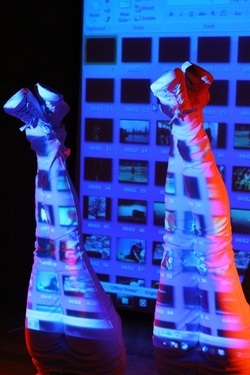 About a year ago, I was sitting in a session on performance composition. The professor facilitating the session started off with a question, what does warm up mean to you ? There were different answers in the room, but the one that stood out for me was this line contributed by my friend and performer Gintare. She said "The physical and psychological opening to the creative process". This one line has greatly influenced the way I approach my warm up sessions prior to beginning a creative process. Devising original work calls for a lot of self preparation for all those involved. Devising is about every individual in the space collectively influencing the creative outcome - and this requires you to in a flexible frame of mind and body, being open to everything coming in and being able to process content leaving aside our biases. Preparing the body and the mind together is critical. I have observed in many rehearsals over the years, that warm up is just a routine. I've noticed actors doing regular stretches, voice warmups and calling out lines, alone or in groups. This is certainly helpful, but the question every performer should ask themselves is - Is it making your mind and body flexible ? Is it really opening you up to the creative process that lies ahead of you ? There is no one warm up process that will work for all. Each individual is different and the warm up outcome will decide what we do in the session. I also urge performers to create for themselves and the group - A warm up outcome, which is to say, what you want the warm up to achieve. This could range from high energy to focus to timing to vocal clarity. Every individual in the performance can have different outcomes, but when it comes to an environment of collaboration, of shared space, the group warms could have similar outcomes, that the group works toward. When one is warmed up physically and psychologically, the ability to take on content and process it is much richer. The contributions made in the space feel fresher. And when people in the space know that the other is warmed up, then the energy in the room is different, there is mutual trust that is established and the creative journey feels wonderful. 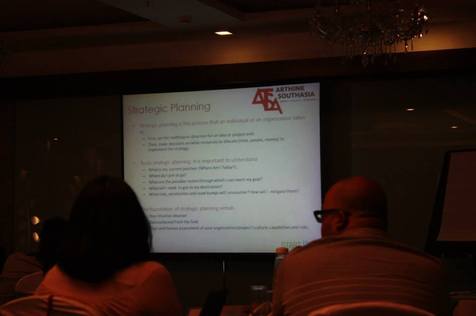 A session from the fellowship - Photo by Bandhu Prasad A session from the fellowship - Photo by Bandhu Prasad "What is Arts Management and why is it important? How is it different from what we do on a day to day basis?" This was the question in my mind as I was enrolling for a two week fellowship programme, ATSA (Art Think South Asia) in Manesar. I have formally studied Marketing and Communications Management and worked as a brand strategist for almost 6 years. I was curious about how this fellowship was going to address Arts Management and therefore how it would be of relevance to the work I currently do. Most of us, practitioners, are so busy in our creative pursuits that we often neglect the concept of managing our own work. I am not referring to managing ticket sales or making sure audiences come along to watch the work. That is hygiene and needs to be done to ensure the encounter with the audience. What we need to make a part of our process is the concept of a strategic plan that will align the work we do to the value that we seek to create. This got me thinking of the very basic question - Do we really think about the value that we are creating or seeking to create before we begin our creative process ? Do we already know what we want to achieve in a communal space and what the audience will potentially take away ? The medium of arts is a power tool that can shape, change and influence. Only when we take time to truly understand the value that we are seeking to create, can value even be created. Else, one is just banking on chance to deliver. Strategic planning for the arts is first a mindset. Given my formal training and experience in management, I have never used any of it consciously to make plans for my theatre organisation. When I asked myself why, I dint quite have an answer. Maybe it's because we have this blanket understanding that management is the left brain and arts is right brained. Maybe its because art and management just dont go together or it's because we have no time for this or it's possibly a Chalta Hai (It's OK) attitude when it comes to our creative work. The two weeks at ATSA has brought me to a conscious realisation of why it is important to manage our creative pursuits and has helped me understand what good will come from just having a plan, that's been thought about before it has been executed. From my learning's at ATSA, here are a few things that will really help arts organisations align their work - It might just sound so simple and obvious, but when you spend time and apply this to your arts organisations, trust me, it will make a difference.
I've taken the time to process all this and make plans for my theatre company, Visual Respiration. It has certainly cleared the air for me and has given me a solid structure to align my artistic vision to almost everything I do. I am happy to help/support anyone who needs a sounding board as they're making plans for their arts organisations. Thanks ATSA for giving us the physical and mental space to think about arts management. Check out the fellowship programme here and apply if you think it's of relevance. 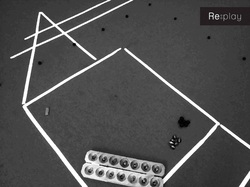 Once I had conceptualised Re:play, I spent a lot of time reading up resource material on the games through a variety of sources. Given that almost all traditional games have been passed on through generations, I came across multiple versions of the same games. In fact, the same game is played in different ways and called different names across the country. This is also what made my research interesting. From finding out mythological connections and stories to games being relevant in today's 21st century, there was a lot to learn from. From the very beginning, I had the support of Manasi Subramaniam as a dramaturg and writer. We would try and orchestrate material in a way that it became interesting from a point of view of performance. I would also take in some of this material to the studio, work with collaborators and explore possibilities. Once we had a structure in place, we then contacted Kreeda Games, a company dedicated to the promotion of traditional games and sought their support from a research point of view. Through the support of Kreeda, one of the most significant things we discovered were personal stories of people who have played these games through time. Research with Kreeda is still ongoing, for further development of the show. The C.P.Ramaswami Aiyar foundation promotes traditional and folk arts. They had published a book called Traditional folk games of Tamilnadu. I contacted the author of the book, Prof. V Balambal who was ever willing to support this initiative. In my meetings and conversations with her, I gained a lot of insights, which have helped shape this performance. Research has always been the foundation to performance. Re:play is a highly research intensive process. Transforming research content to performative action has been the most enjoyable process over the last 6 months, apart from the fact that I pester people to tell me about all the traditional Indian games that they have played over the years. Re:play premieres on the 19, 20 and 21 of September at the C. P. Ramaswami Aiyar Foundation(Alwarpet), followed by a public showcasing on the 28 and 29 of September at Spaces (Besant Nagar) in Chennai. Both performances are only on a registration basis, the details of which we will put up next week. The performance will also tour Bangalore and Hyderabad over October and November. Looking forward to Re:play times. - Aruna Ganesh Ram 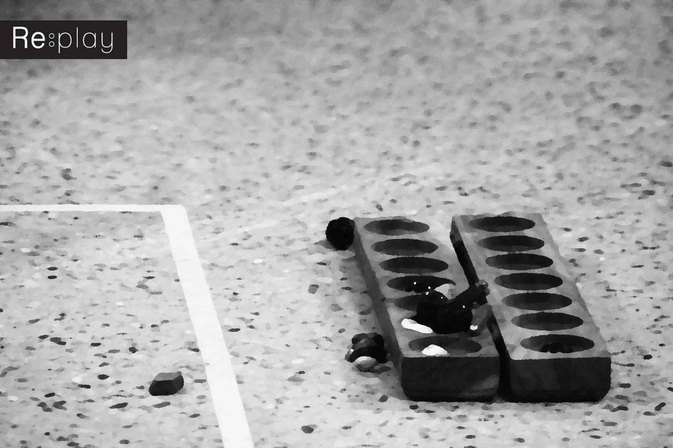 It was definitely 15 years ago when I last played Parcheesi (Ludo variant) or Paramapadham (Snakes and Ladders). Now, in the context of creating performance out of the games, playing with the games was more critical than playing the games themselves. When I initially started devising Re:play, I brought all the games, their objects and rules into the rehearsal studio, spread them around in the space and sat in the centre, just watching the many objects, elements, patterns and textures. The metallic dice, the cowrie shells and the tamarind seeds were all elements waiting to be explored. I tossed around the Pallanguzhi box for over an hour trying to create different rhythms and sounds with it. Based on these sounds and rhythms of the box, I would then scribble down associations, which would become a base to start creating. Similarly, over 40 marbles would be strewn around the studio and I would watch them roll away. It was quite magical and fascinating. Another exciting discovery was the many patterns of the board games and their possibilities. I would draw out these patterns on the floor and use them as movement guides to figure out spatial architecture and topography. While working with performers in Chennai, we would perform tasks that involved the rules of the games or the objects/patterns and through the process of performing the task, we would make discoveries about movement themes, spatial possibilities and potential narratives. Re:play has been completely devised in such fashion, where objects, patterns, structures, rules, colours and textures would inspire multiple starting points for performance. It's been a great experience devising original work, playing with the games, making discoveries and creating performance. Re:play premieres on the 19, 20 and 21 of September at the C. P. Ramaswami Aiyar Foundation(Alwarpet), followed by a public showcasing on the 28 and 29 of September at Spaces (Besant Nagar) in Chennai. Both performances are only on a registration basis, the details of which we will put up next week. The performance will also tour Bangalore and Hyderabad over October and November 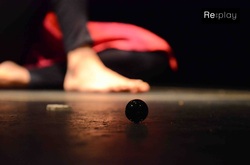 What is immersive theatre ? Immersive theatre is about experiencing a piece of theatre as opposed to just watching it. One can argue that watching something can also be an experience. Immersive theatre goes beyond that and seeks to engage multiple senses. This multi sensorial experience of immersive theatre immerses you in a new world, whose rules are slightly different. Through the process of immersion, you cease to become a passive spectator. The concepts of the traditional proscenium, the stage, that divides space between the performers and the audience no longer exists in such kind of work. A new relationship is sought between the performers and audience. Re:play is one such immersive performance with a dynamic relationship between the performers and the audience, the combination of which influences the performance. Through the duration of the performance, the audience will be challenged with simple, yet unique tasks that will shape the way they experience the performance. An element of play is involved, again with a set of rules that the audience will be grasp onto, through the performance. 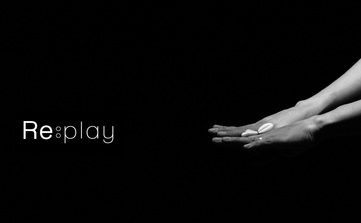 So what is Re:play? In a line, Re:play is a devised performance duet inspired by traditional Indian games. I have always been fascinated by traditional games and grew up playing many of these. A year ago, I came by an article in the paper about how we no longer play any of these games, given that most of us have moved on to become a part of the digital space. Suddenly, I started composing visuals in my head about how the different elements from traditional games could be composed into performance. I remember picking up a pen and scribbling out the patterns of these board games and how they can spatially be reconstructed in a performance context. This was the beginning. I spent over 3 months in the rehearsal studio in London working with collaborators who were dramaturgs, movement practitioners and performers, to explore the possibilities that these games lend themselves to. Given that we were dealing with games, an element of participation was a key consideration. Re:play asks of the audience a bit more than just being a passive spectator. This is what makes Re:play an immersive performance. A lot in the performance is based on chance happenings, so one may not be in control at all times, but one is in control of his/her experience through the performance. It was really exciting to discover how Traditional Indian games have been played in different contexts through time. Re:play is an experience of the sounds, rhythms, patterns, structures, colours and narratives that traditional Indian games lend themselves to. The performance also explores how these games and their elements are relevant to us by going through a journey that evokes themes of mythology, contemporary events, memory, Indian History as well as Indian folklore. Re:play premieres on the 19, 20 and 21 of September at the C. P. Ramaswami Aiyar Foundation(Alwarpet), followed by a public showcasing on the 28 and 29 of September at Spaces (Besant Nagar) in Chennai. Both performances are only on a registration basis, the details of which we will put up next week. The performance will also tour Bangalore and Hyderabad over October and November. Looking forward to Re:play times. |
Archives
March 2020
Categories
All
|
